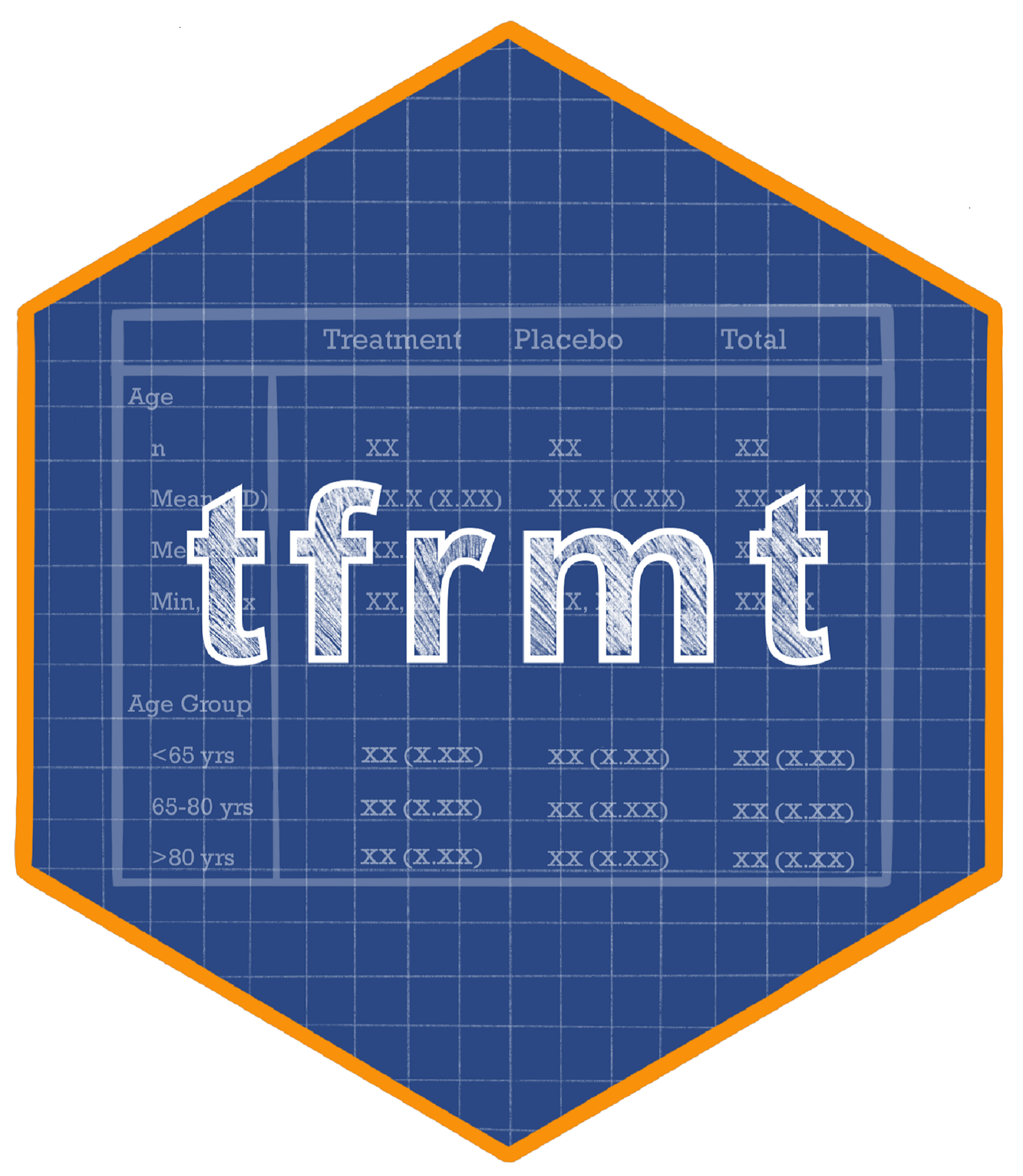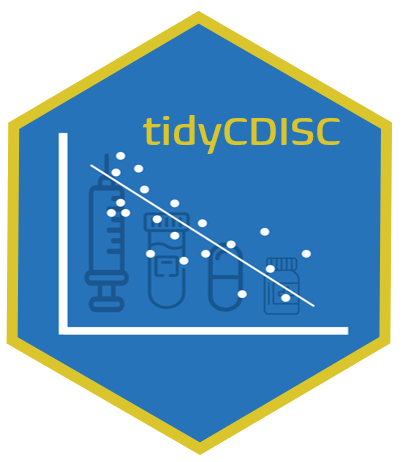TLGs (tables, listings, and graphs - also known as TLFs/TFLs with F for figures) refer to the packages that take data, and convert then into a human intepretable insight.
There are two relevant stages of TLGs - static TLGs, which as of today are the only type of evidence submitted to regulatory bodies, and interactive TLGs, which are predominantly, but not limited to, shiny apps.
For tables, we recommend the effort from R Consortium - Tables in Clinical Trials with R - as a useful read to compare examples from several of the below packages.
Tables
 rtables
rtables



A framework for declaring complex multi-level tabulations and then applying them to data
 chevron
chevron



Holds TLG template standards to create standard outputs for clinical trials reporting with limited parameterisation.
 pharmaRTF
pharmaRTF



Enhanced RTF wrapper written in R for use with existing R tables packages such as huxtable or GT
 Tplyr
Tplyr



To simplify the data manipulation necessary to create clinical reports
 gtsummary
gtsummary



Creates tables from either an Analysis Results Dataset (ARD) or a data frame with an ARD by-product
 tfrmt
tfrmt



A language for defining display-related metadata to automate the transformation from an Analysis Results Dataset (ARD) to a table
 tfrmtbuilder
tfrmtbuilder



A Shiny app interface for the {tfrmt} package
 tidytlg
tidytlg



Generate table, listings, and graphs (TLG) using the Tidyverse
ARD / ARS
ARD (Analysis Results Data) is an emerging CDISC standard model for encoding statistical analysis summaries in a machine-readable format. ARS (Analysis Results Standard) is the overarching CDISC framework intended to standardize the specification and representation of analysis results using metadata.
 cards
cards



Construct CDISC Analysis Results Dataset (ARD) objects
 cardx
cardx



Extra Analysis Results Data (ARD) summary objects supplementary to {cards}
 siera
siera



Generate analysis results programs using ARS metadata
Listings
 rlistings
rlistings



A framework for creating data listings
Plots
 ggsurvfit
ggsurvfit



Eases the creation of time-to-event (aka survival) summary figures
While ggplot2 is a lower level, non-pharma specific plotting package. It is universally accepted as the package for graphics, so included here and as a non-pharma package.
 ggplot2
ggplot2 An implementation of the Grammar of Graphics in R, and the most popular plotting package for static plots in R.
Interactive
 tidyCDISC
tidyCDISC



A shiny app to easily create custom tables and figures from ADaM-ish data sets
 rhino
rhino



Supports creating and extending enterprise Shiny applications using best practices
Frameworks
The following frameworks allow for the engine used to generate the output to be modified.
For example, they could be used with ggplot2, rtables, plotly, or Tplyr.



Clinical table styling tools and utilities
 gridify
gridify



Enrich tables and figures with custom headers/footers and more
 docorator
docorator



A framework for framing a table, listing or figure with headers/footers and saving to an output across multiple file types
 autoslider
autoslider Slide Automation for Tables, Listings and Figures
 tern
tern



Layers analytics from descriptive summaries to more complex statistics on top of the foundational table layouts, analytic and content controls
 teal
teal



Framework developed that leverages the R Shiny package to scale development of our shiny apps
Tables, Listings, and Graphs Catalogs with many examples are available here:
There are publicly available example Shiny applications created using these:
Upcoming packages for consideration
The following is being worked up towards CRAN submission to be considered for later inclusion into the pharmaverse - we felt important to share here in case others are working in a similar space and would be interested to collaborate with the respective developers.
 cardinal
cardinal


Implementation of table-generating functions to implement standard FDA Safety Tables according to the guidelines.